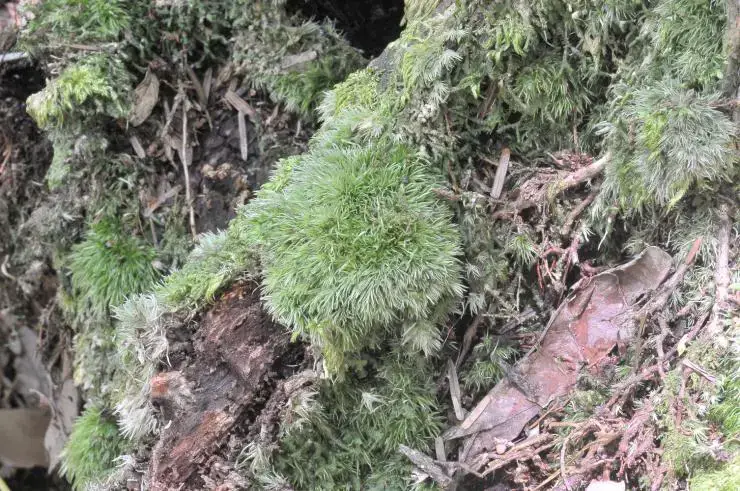
7037e79d418c961c5141889e083833ce.jpg from: https://taieol.tw/muse/digi_object/2355523fe7d6b11d4b7a8ac495911fd7
Introduction
In the vast and captivating world of bryophytes, one particular moss species stands out for its unique characteristics and ecological significance – the Leptodontium aggregatum (Müll.Hal.) Kindb. Belonging to the Pottiaceae family, this unassuming yet fascinating moss is commonly referred to as Leptodontium. Let’s embark on an engaging journey to unravel the secrets of this remarkable plant.
Background
Before delving into the intricacies of Leptodontium aggregatum, it’s essential to understand the broader context of bryophytes. These non-vascular plants, which include mosses, liverworts, and hornworts, are often overlooked but play a crucial role in various ecosystems. They are among the oldest land plants on Earth, dating back to the Paleozoic era, and have adapted to thrive in diverse environments.
Main Content
Morphology and Identification
Leptodontium aggregatum is a small, acrocarpous moss that forms dense, cushion-like tufts or mats. Its leaves are lanceolate to ovate-lanceolate, with a distinctive costa (midrib) that extends beyond the leaf apex, forming a short hair-point. The leaf margins are often recurved, and the cells are elongated and smooth. When mature, the moss produces capsules (spore-bearing structures) that are erect and cylindrical, with a reddish-brown color.
Global Distribution and Habitat
This remarkable moss species has a widespread distribution, occurring on various continents, including Europe, Asia, Africa, and North America. It thrives in a range of habitats, from dry and exposed rock surfaces to sandy or gravelly areas. Leptodontium aggregatum is often found in mountainous regions, coastal areas, and disturbed sites, showcasing its adaptability and resilience.
Ecological Roles and Adaptations
Despite its diminutive size, Leptodontium aggregatum plays a vital role in its ecosystem. It contributes to soil formation and stabilization, helping to prevent erosion and providing a suitable environment for other plants to establish themselves. Additionally, this moss serves as a microhabitat for various invertebrates, offering shelter and food sources.
One of the remarkable adaptations of Leptodontium aggregatum is its ability to tolerate desiccation. During dry periods, the moss can enter a state of dormancy, reviving once moisture becomes available again. This trait allows it to thrive in harsh, arid environments where other plants might struggle to survive.
Case Studies/Examples
In a study conducted in the Swiss Alps, researchers found that Leptodontium aggregatum played a crucial role in the early stages of primary succession on newly exposed rock surfaces. Its ability to colonize these harsh environments facilitated the establishment of other plant species, ultimately leading to the formation of more complex ecosystems.
Another example comes from the Mojave Desert in the United States, where Leptodontium aggregatum was observed growing on biological soil crusts. These crusts, composed of various organisms, including mosses, lichens, and cyanobacteria, play a vital role in stabilizing desert soils and preventing erosion.
Technical Table
| Characteristic | Description |
|---|---|
| Family | Pottiaceae |
| Genus | Leptodontium |
| Species | Leptodontium aggregatum (Müll.Hal.) Kindb. |
| Growth Form | Acrocarpous, cushion-like tufts or mats |
| Leaf Shape | Lanceolate to ovate-lanceolate |
| Leaf Margin | Often recurved |
| Leaf Cells | Elongated, smooth |
| Costa | Extending beyond leaf apex, forming a short hair-point |
| Capsules | Erect, cylindrical, reddish-brown |
| Habitat | Dry and exposed rock surfaces, sandy or gravelly areas, mountainous regions, coastal areas, disturbed sites |
| Distribution | Widespread, occurring on various continents (Europe, Asia, Africa, North America) |
| Ecological Roles | Soil formation, stabilization, microhabitat for invertebrates |
| Adaptations | Tolerance to desiccation, dormancy during dry periods |
Conclusion
The Leptodontium aggregatum (Müll.Hal.) Kindb. moss, a member of the Pottiaceae family, is a remarkable example of nature’s resilience and adaptability. Despite its unassuming appearance, this species plays a crucial role in various ecosystems, contributing to soil formation, stabilization, and providing microhabitats for other organisms. Its ability to tolerate desiccation and colonize harsh environments makes it a true survivor in the plant kingdom. As we continue to explore and appreciate the diversity of bryophytes, the Leptodontium aggregatum serves as a reminder of the intricate web of life that surrounds us, even in the most unexpected places.
Ponder this: How might the study of resilient species like Leptodontium aggregatum inform our efforts to mitigate the effects of climate change and habitat degradation?